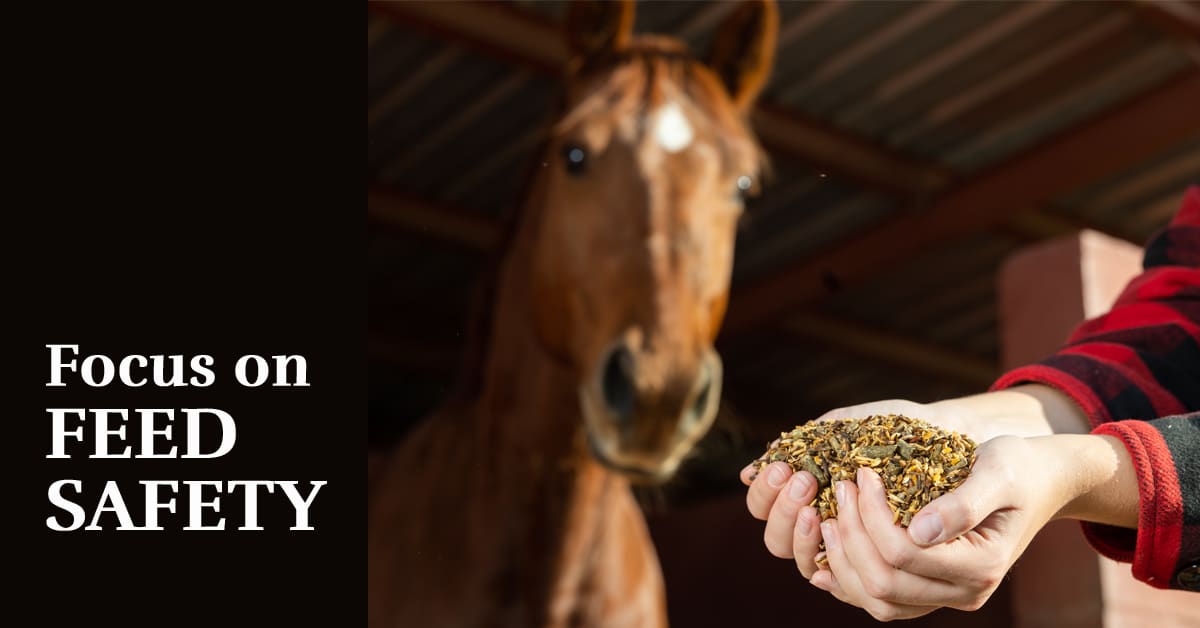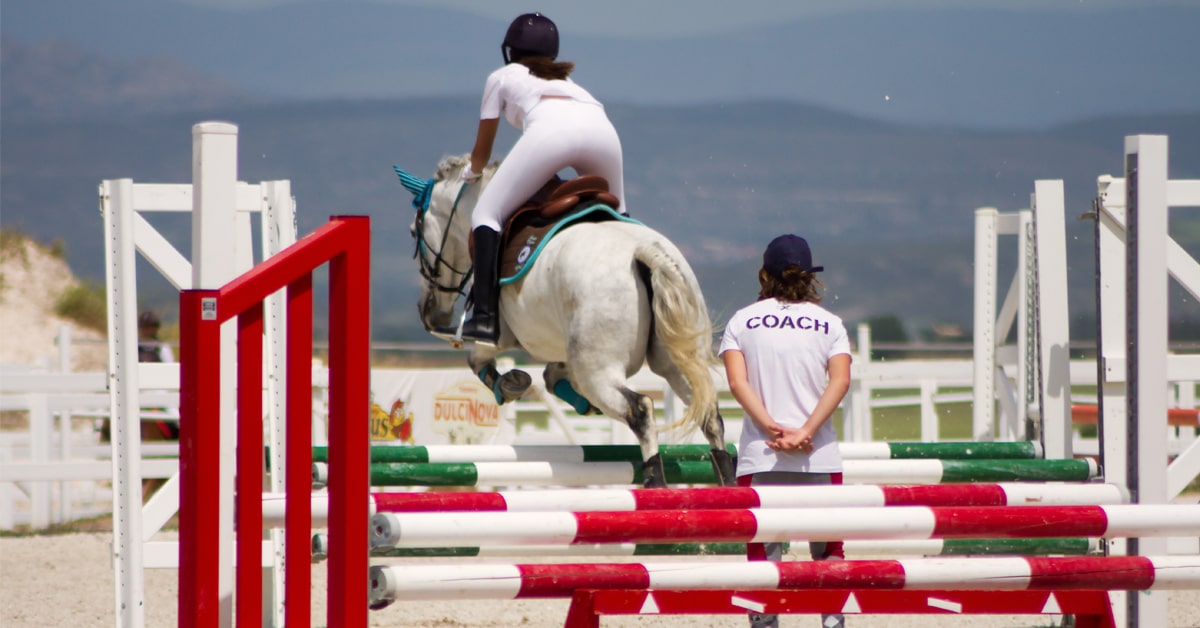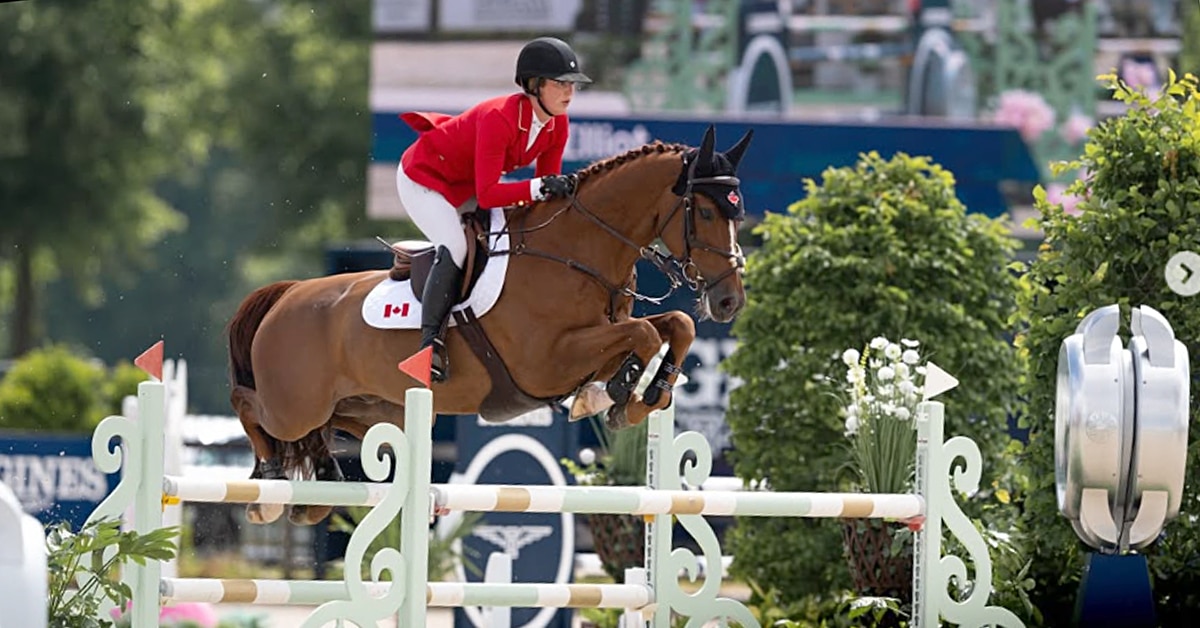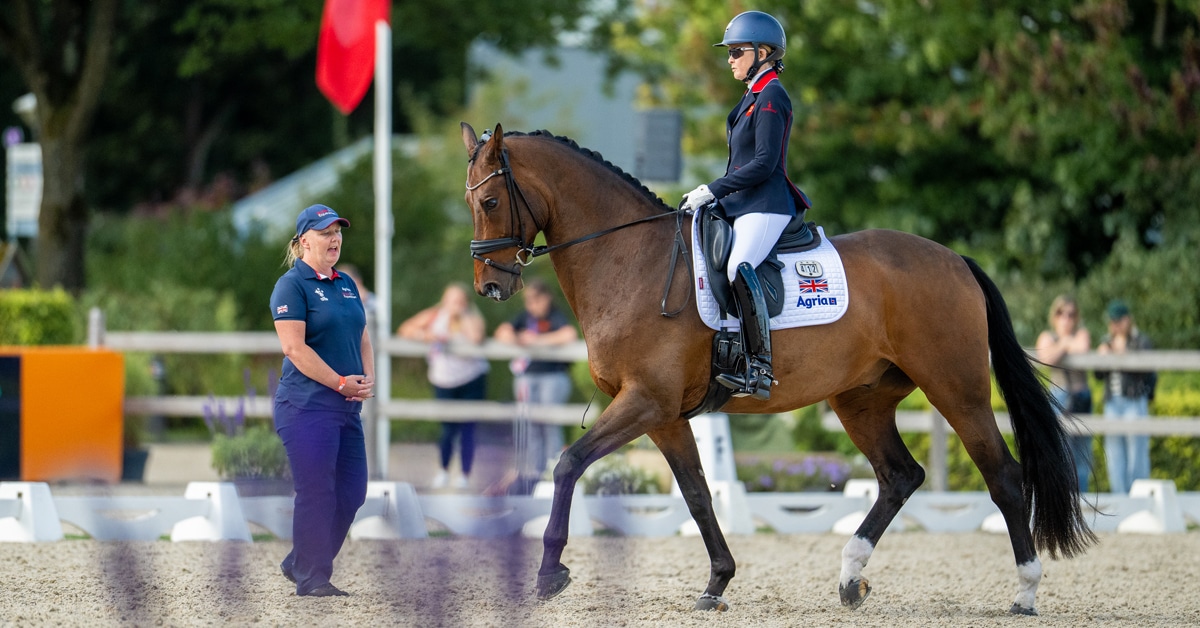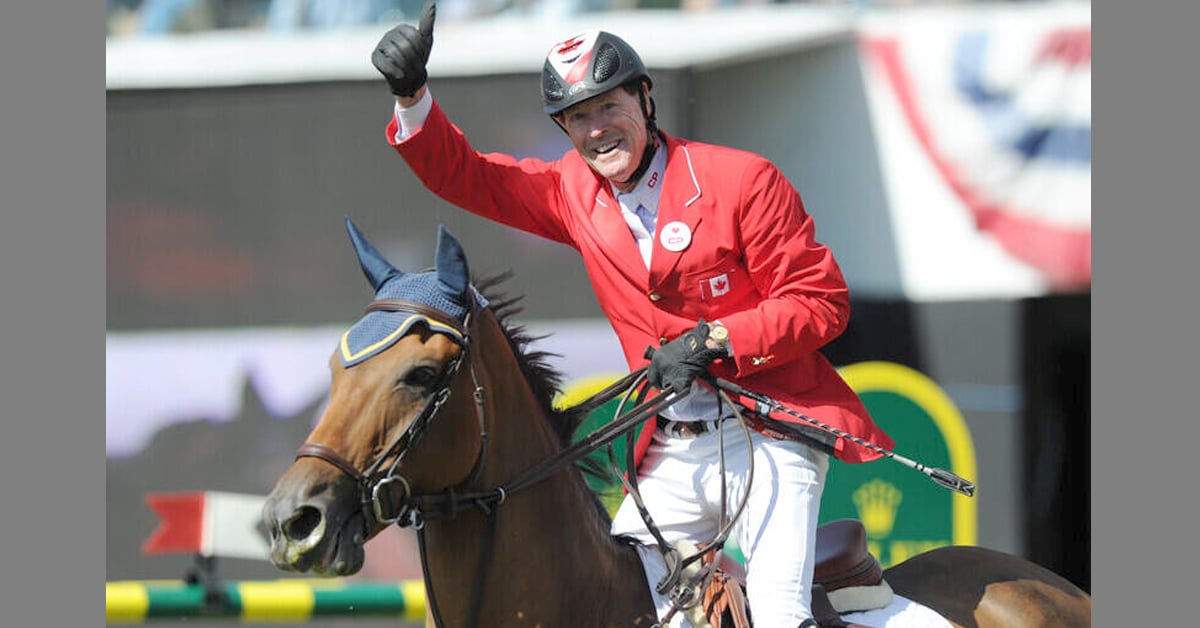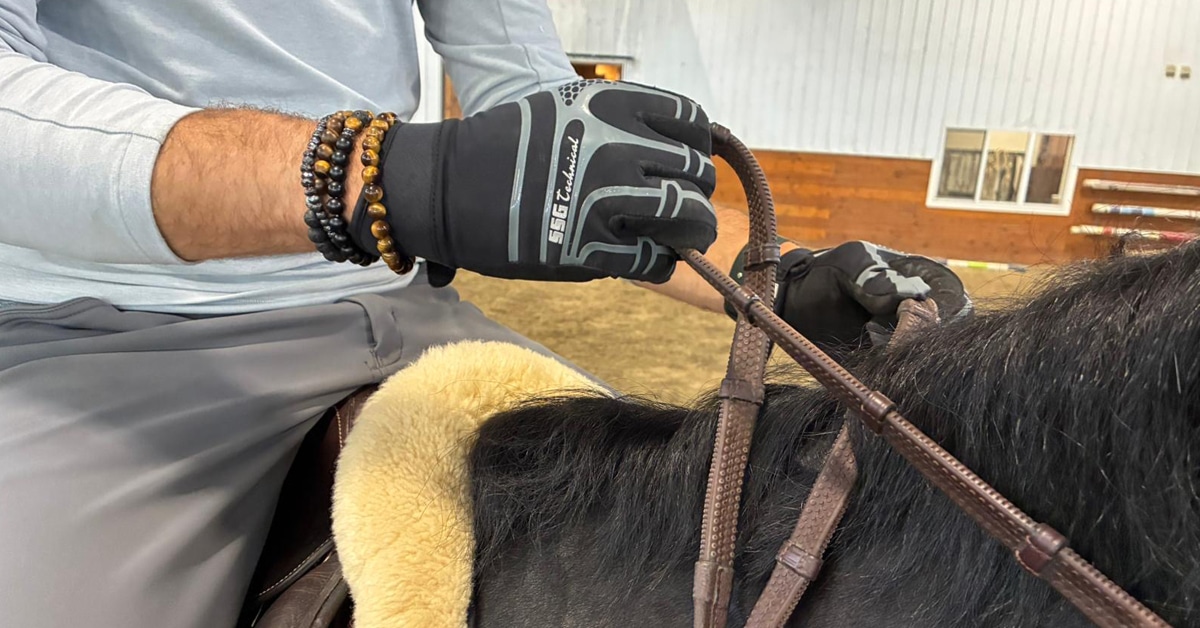Contrary to claims made by EC that keeping criteria confidential is common practice among other sports, a Google search of ten randomly-chosen summer Olympic sports reveals that is not the case.
When Equine Canada CEO Eva Havaris created the position of High Performance Director early in 2015, it addressed a longtime weakness in EC’s structure. Most national sport organizations (NSOs) in developed countries have dedicated High Performance programs designed to support athletes and national teams competing at major games and championships. Amie O’Shaughnessy, promoted to the position from her previous role as Director of Para-Equestrian, became EC’s first ever High Performance Director. In the months following O’Shaughnessy’s appointment, another new position was filled: that of Performance Analyst. Jessica Dilliott has a degree in Equine Sports Science from Great Britain. Her skills provide a technical complement to O’Shaughnessy’s management responsibilities. The individual discipline managers at EC now report directly to O’Shaughnessy, fleshing out the High Performance department that has been so badly needed.
Situation Critical in Eventing
As O’Shaughnessy went into the Pan Am Games in Toronto, her first major Games as High Performance Director, a crisis was unfolding in eventing, although its beginnings stretch back to 2012, when declining performances resulted in a total loss of Own the Podium funding. The Canadian Eventing Team has not been able to maintain the level of success that was achieved at the 2010 WEG and the 2011 Pan Am Games. Canadian team technical advisor David O’Connor, returning to coach his American compatriots following London, was replaced by Australian Olympian Clayton Fredericks.
In June 2014, a botched Canadian WEG Eventing Team announcement was made and then quickly altered after it was discovered that one of the team members had failed to declare for the team and was therefore ineligible. The team that ultimately went to Normandy managed to achieve a seventh-place finish with only three out of four team members finishing the competition. That placing improved to sixth after France was disqualified for a positive drug test on one of its horses, which also gave Canada a team qualification for Rio 2016. That’s the good news.
After Canada’s Normandy team was announced, longtime team chef d’équipe for the Canadian Eventing Team, Graeme Thom, resigned from his volunteer roles. Thom cited a lack of commitment to adhering to the criteria in selecting the team, and thus eroding the strategy of excellence (rather than mere participation) that had been established by O’Connor. Not every team member that traveled to Normandy had fully met the criteria. A year later, the same pattern repeated itself, with controversy erupting over the naming of the team and reserve members for Toronto 2015. Again, there were accusations about a lack of strict adherence to the criteria, and about combinations being passed over in favour of less-qualified horses and riders.
Immediately following the Pan Am Games, a group of elite athletes, including members of the Pan Am team, wrote a letter to O’Shaughnessy that included testimonials from 20 riders. The letter voiced deep concerns over the competence of Eventing’s High Performance Committee; the athletes asked that the existing committee be removed and replaced by a paid chef d’équipe position. Also cited were concerns over coaching performance. Rumours that Fredericks’ resignation had been asked for have not been confirmed – nor have they been denied.
EC convened a Canadian Eventing Summit in late September to examine the challenges facing the Eventing High Performance Program. O’Shaughnessy confirms that the athletes had already voiced concerns such as communication, coaching, and the High Performance Committee. “The focus at the Summit was on developing a stronger program moving forward, particularly for Rio,” she says. During the Summit, input was sought from all stakeholders, including athletes, owners, coaches, and EC staff and volunteers. The requested paid chef position was not filled, but in November it was announced that Ozzie Sawicki, one of the two facilitators at the Summit, had been contracted as a High Performance Advisor through Rio 2016. Sawicki has a depth of experience in high performance sport, primarily in alpine skiing. He has previously worked with Equine Canada as an advisor to the London 2012 Para-Dressage team; in 2014 he helped create Canadian Eventing’s No Boundaries program.
O’Shaughnessy says Sawicki’s contract with EC is only until Rio, and he is not a replacement for a chef d’équipe. “Ozzie will not be fulfilling the role of chef d’équipe; he is responsible for developing the program strategies in non-technical areas. Any changes around team personnel roles for eventing will be reviewed after Rio.” The riders may not have received everything they asked for in July, but it cannot be said that their concerns have gone unheard, or that efforts have not been made by EC to address them.
According to O’Shaughnessy, the Eventing High Performance Committee has, in fact, been dissolved. Governance changes within EC will see all such committees disappear in 2016, however – not just in eventing. “The athletes now have an improved line of communication without having to go through a committee,” says O’Shaughnessy. For their part, the athletes are all but silent on the matter now, at least in public. There is a high degree of reluctance on their part to go on the record with concerns, for two reasons: fear of retribution when it comes to team selection, and a lack of appetite for letting their focus be taken away from the short term goal – to qualify for the Olympic Team.
Rio will be a final testing ground for the efforts made to improve communication and support to the athletes. If the situation is not significantly better than it was in Toronto last July, the riders may finally raise their voices publicly to try and initiate change.
Criteria Confidential
Historically, selection criteria for major Games have been made available by Equine Canada through publication on the EC website. The publishing of criteria hasn’t been consistently universal across all disciplines, but in the case when they were not published online, they were always available to the media and individuals if asked for. That is not the case for the Rio criteria, which are available only to “high performance athletes upon request.” EC’s official reason for not publishing the criteria was stated as follows:
‘The decision not to publish CET selection criteria was made to protect Canadian athletes seeking to achieve the necessary qualifications to represent Canada on the world stage. Publishing selection criteria opens the door for exploitation by other countries and has the potential to negatively impact Canada’s athletes. In addition, EC respects the time, effort and expertise provided by our expert volunteers and is committed to protecting their intellectual property.’
Contrary to claims made by EC that keeping criteria confidential is common practice among other sports, a Google search of ten randomly-chosen summer Olympic sports – gymnastics, canoe/kayak, athletics, cycling, rowing, boxing, taekwondo, sailing, volleyball, and judo – reveals that is not the case. All ten sports have the Rio criteria on their NSO websites. Nor is the withholding of criteria from the public common in the US. Rio criteria for the US equestrian teams can be found on the USEF website. Additionally, the Sport Dispute Resolution Centre of Canada stresses the importance not just of publishing criteria on websites, but proactively putting them in the hands of anyone who may have reason to see them.
The response from various individuals – from comments on the blog Straight-Up to privately expressed concerns from horse owners and athletes’ families – has been one of dissatisfaction with the lack of transparency regarding the criteria. Not everyone sees a problem with not publishing them, however. Terrance ‘Torchy’ Millar is best known within the Canadian show jumping community as its long-time team chef d’équipe. Millar points out that the people who actually have a need to see the criteria – athletes who were considering declaring for the team – do have access. “I don’t believe it’s necessary to publicly post the criteria online as long as the athletes have access to them on demand,” he says.
EC’s rationale for not making the Rio criteria public is based on two dubious premises: that there is an actual threat to Canada’s athletes, and that selection criteria qualify as intellectual property. From a promotional standpoint, withholding the criteria is problematic. How are journalists and supporters to follow the progress of the declared athletes if they don’t know what the benchmarks are for making the team?
O’Shaughnessy acknowledges that while the majority of people in the Canadian equestrian community are unlikely to want to see the Rio criteria, there are pieces of information regarding team selection that would be of importance when it comes to promoting the athletes as they put an Olympian amount of effort into trying to make the team. “The criteria are still distributed and published to all intended stakeholders,” she says. “Information about the 2016 Rio Olympic and Paralympic Games, the targeted athletes, and the team announcement timelines will be published in the early part of 2016. This will be more impactful to fans, participants, and the media than selection documentation.”
Decisions regarding the approach to the Rio criteria will undoubtedly be one of many policies that will be reviewed following the 2016 Olympics. At the very least, there is one inarguably positive development: that there is finally an actual department within EC dedicated to improving the High Performance program and helping athletes achieve excellence on the world stage.
The Weight of Words
There is a Czech proverb that translates into English roughly as ‘without communication there is no command.’ EC has been plagued for decades by struggles between itself and various stakeholder groups – provincial affiliates and high performance athletes, to name just two. A failure of communication has been a recurring theme, one that was recognized by both of EC’s previous CEOs as being in need of reform. And yet the perception among members, that they are not being kept informed about matters that affect them, persists. Many of the people who have expressed concern over the Rio criteria don’t actually want to see them. That’s not the point. It’s the fact they are being denied access that is, for most, another example of how EC must improve its transparency with members.
EC will be implementing significant governance changes in 2016, due in large part to the new bylaws that were passed in 2015. The potential for growth and positive change within the organization is undeniable; but it will not be possible in a vacuum, without engagement from the community. If the process isn’t adequately transparent to the membership, it’s likely that EC’s decision-makers will be doomed to repeat history.
The Latest
